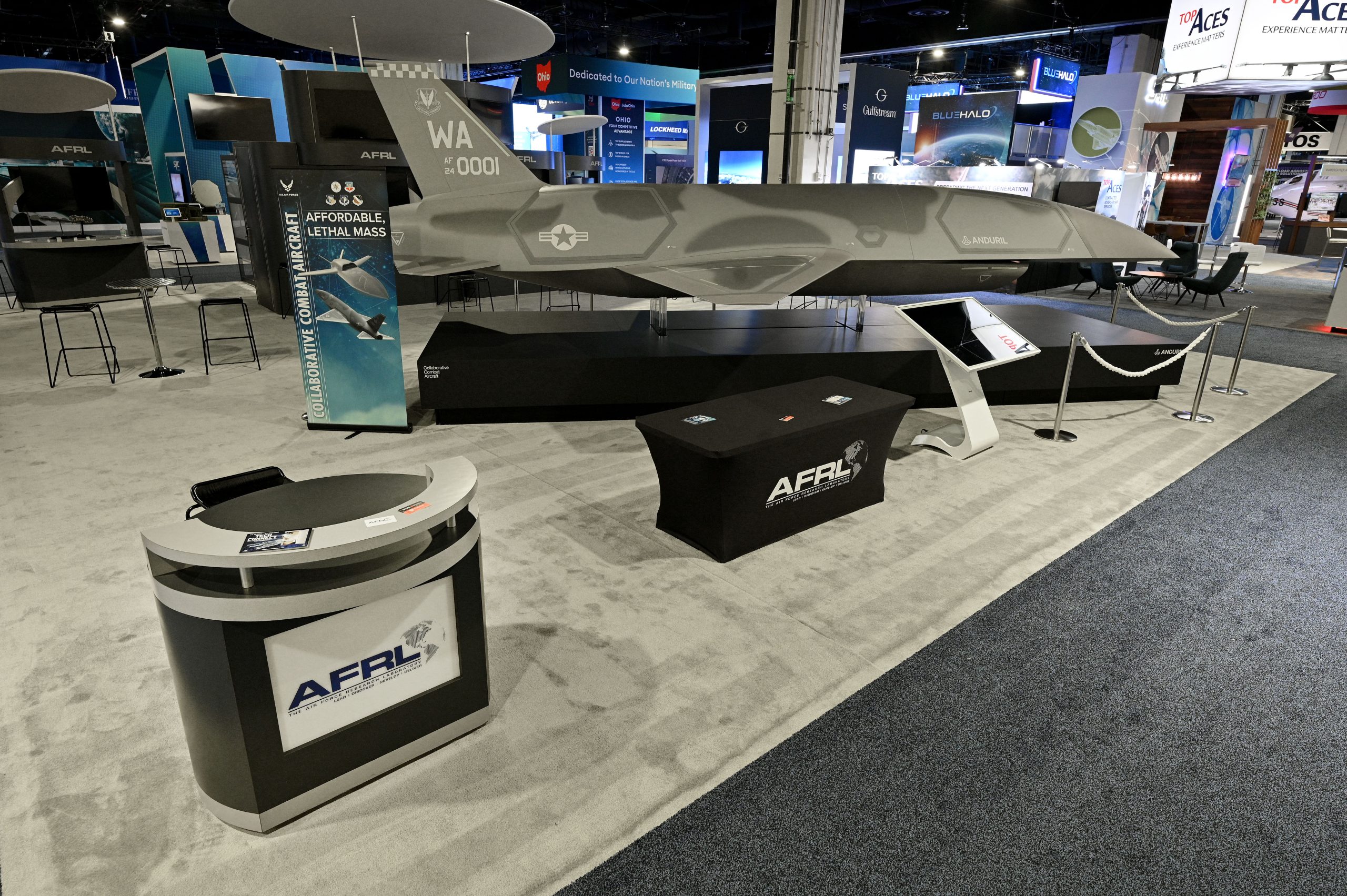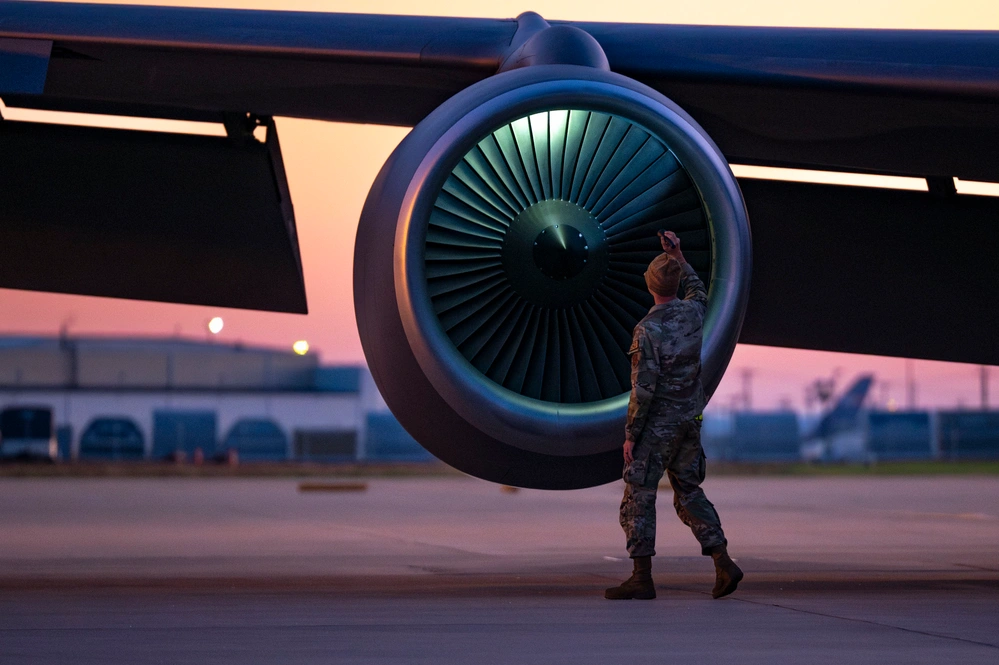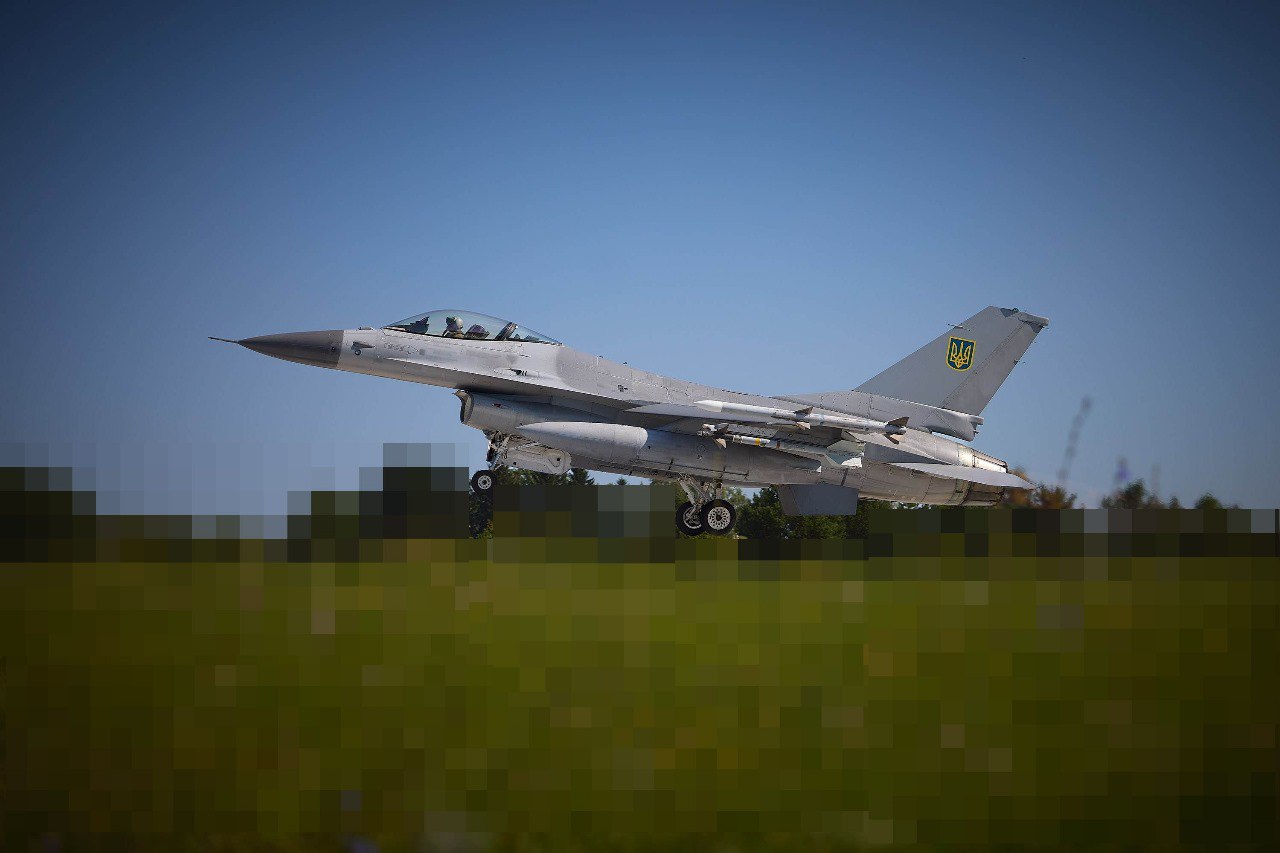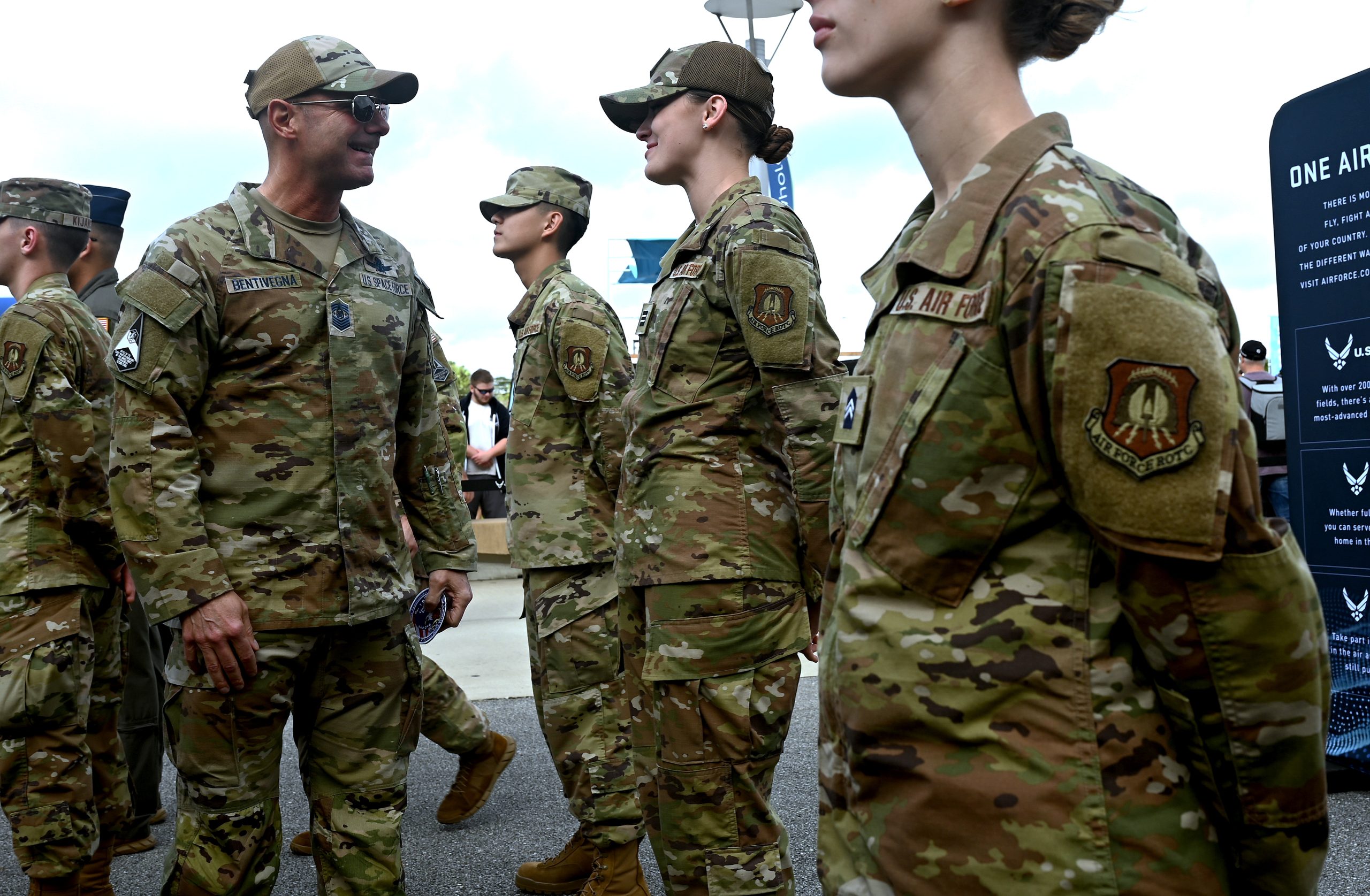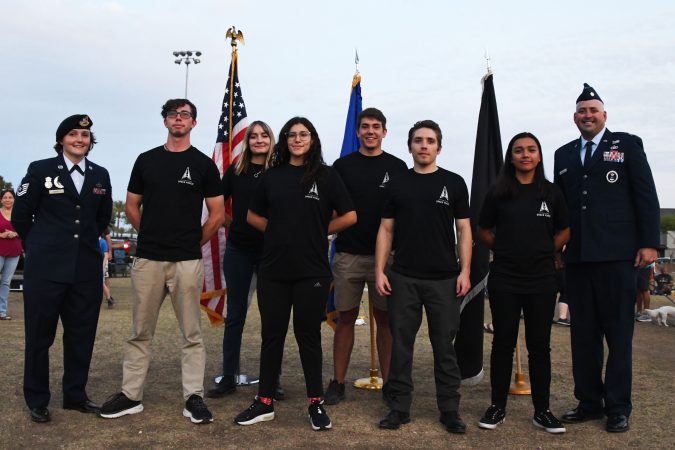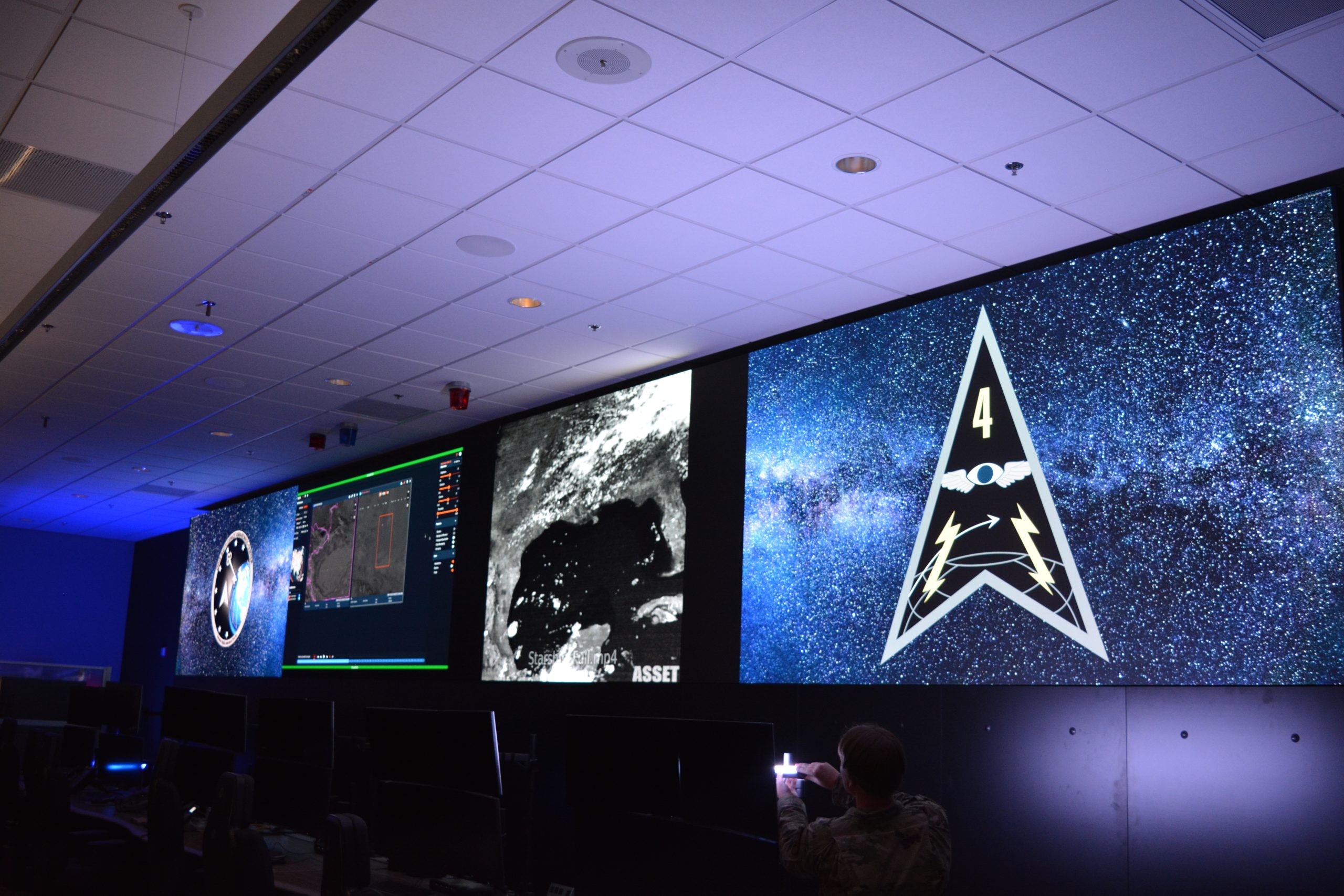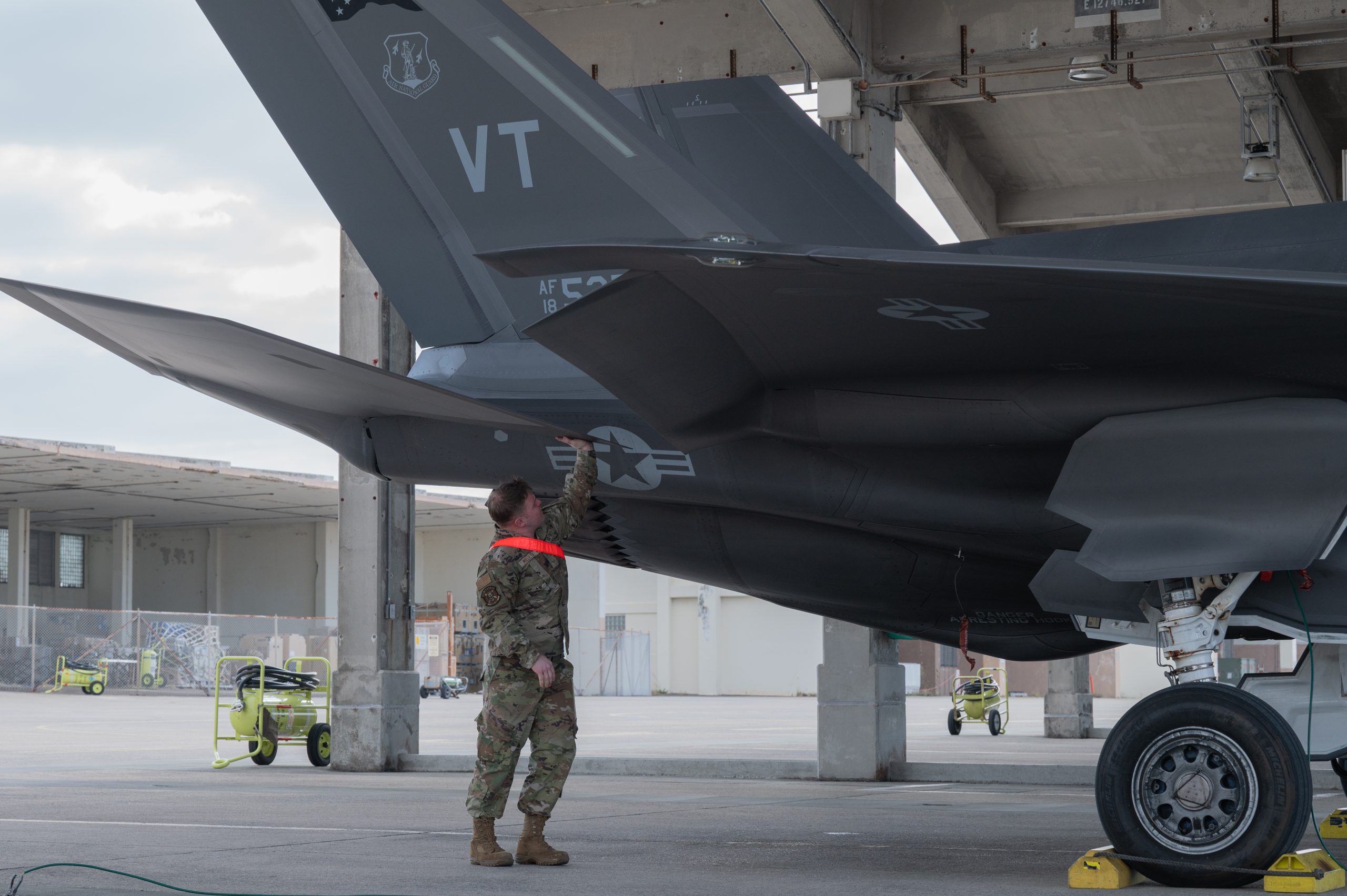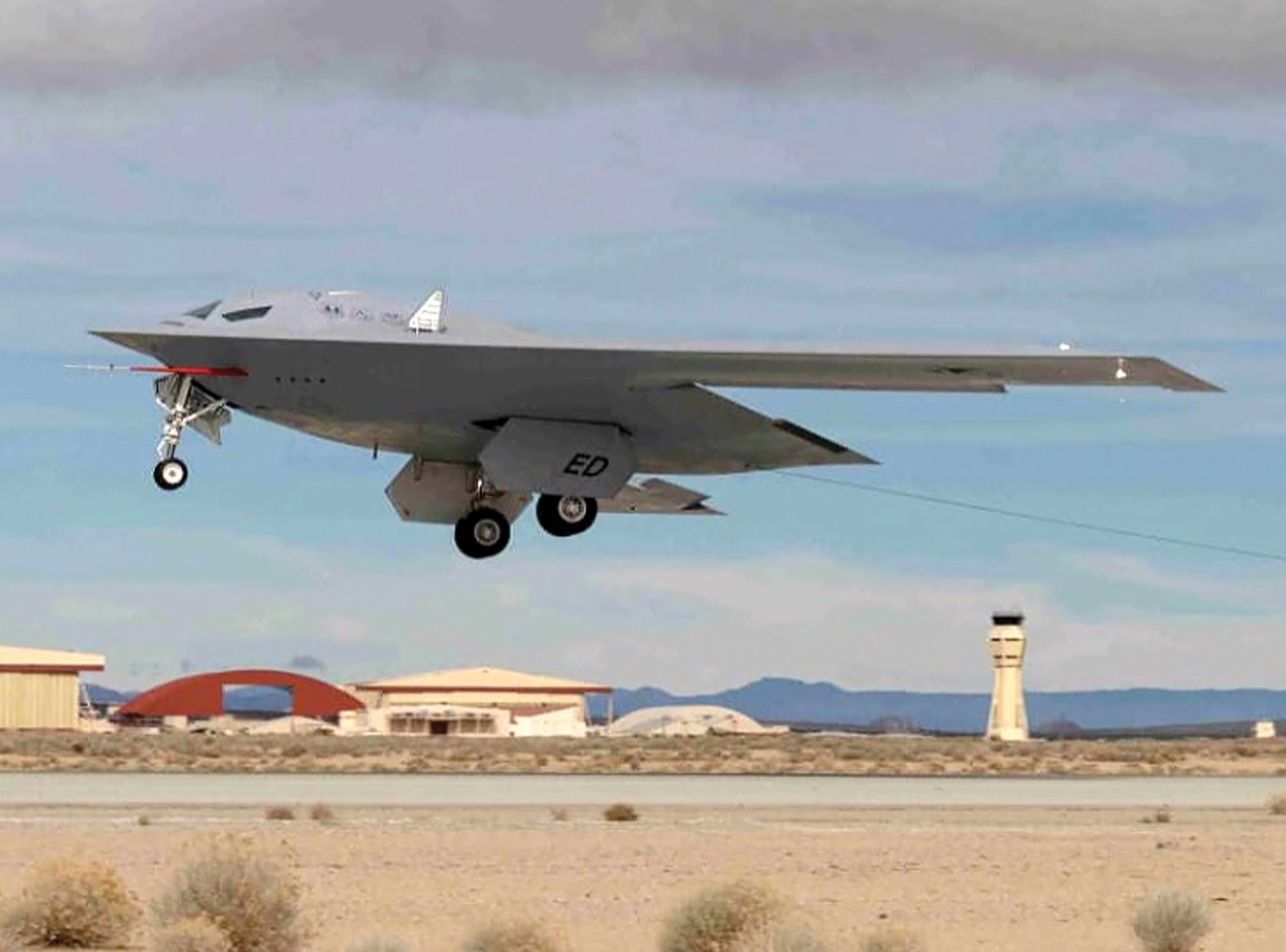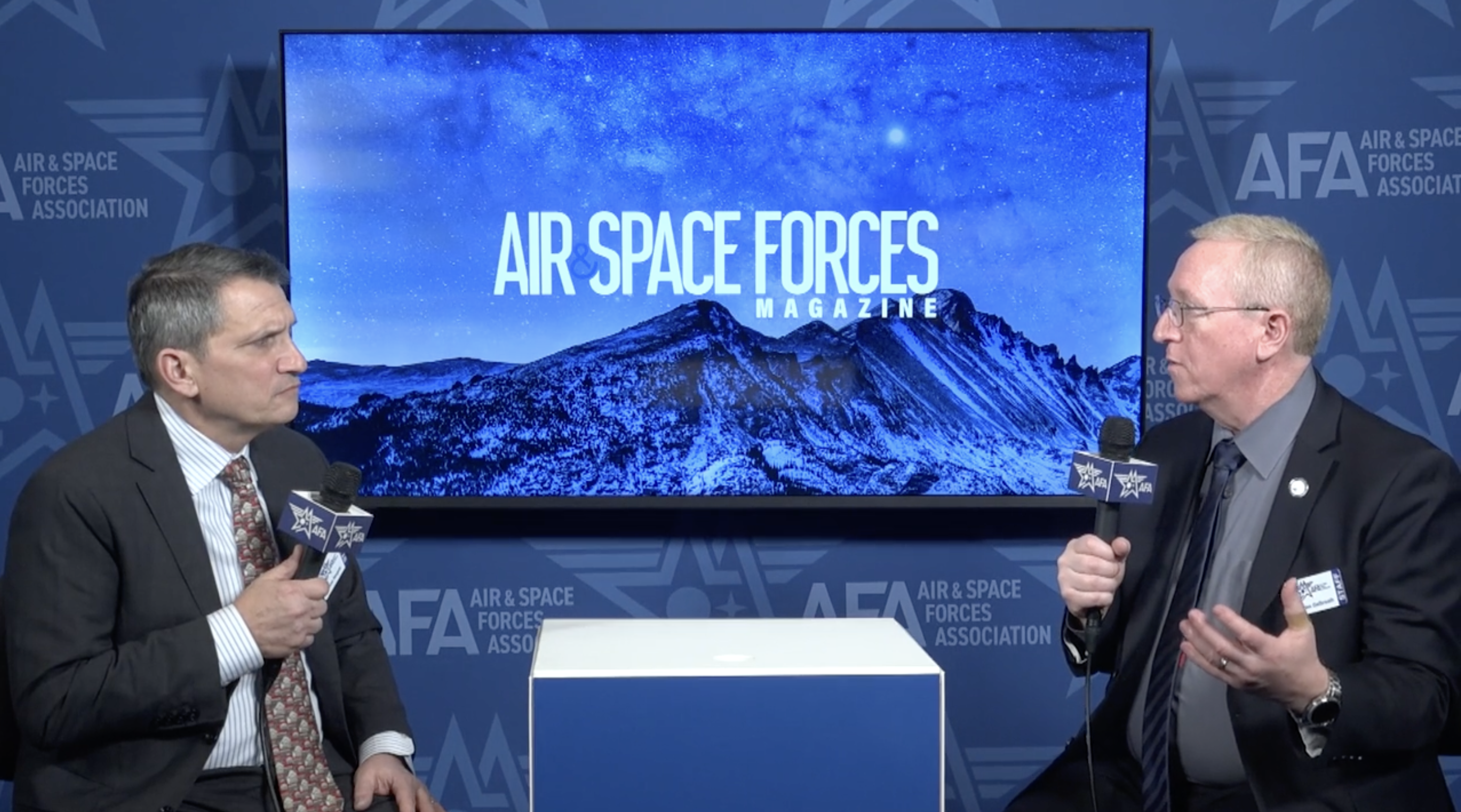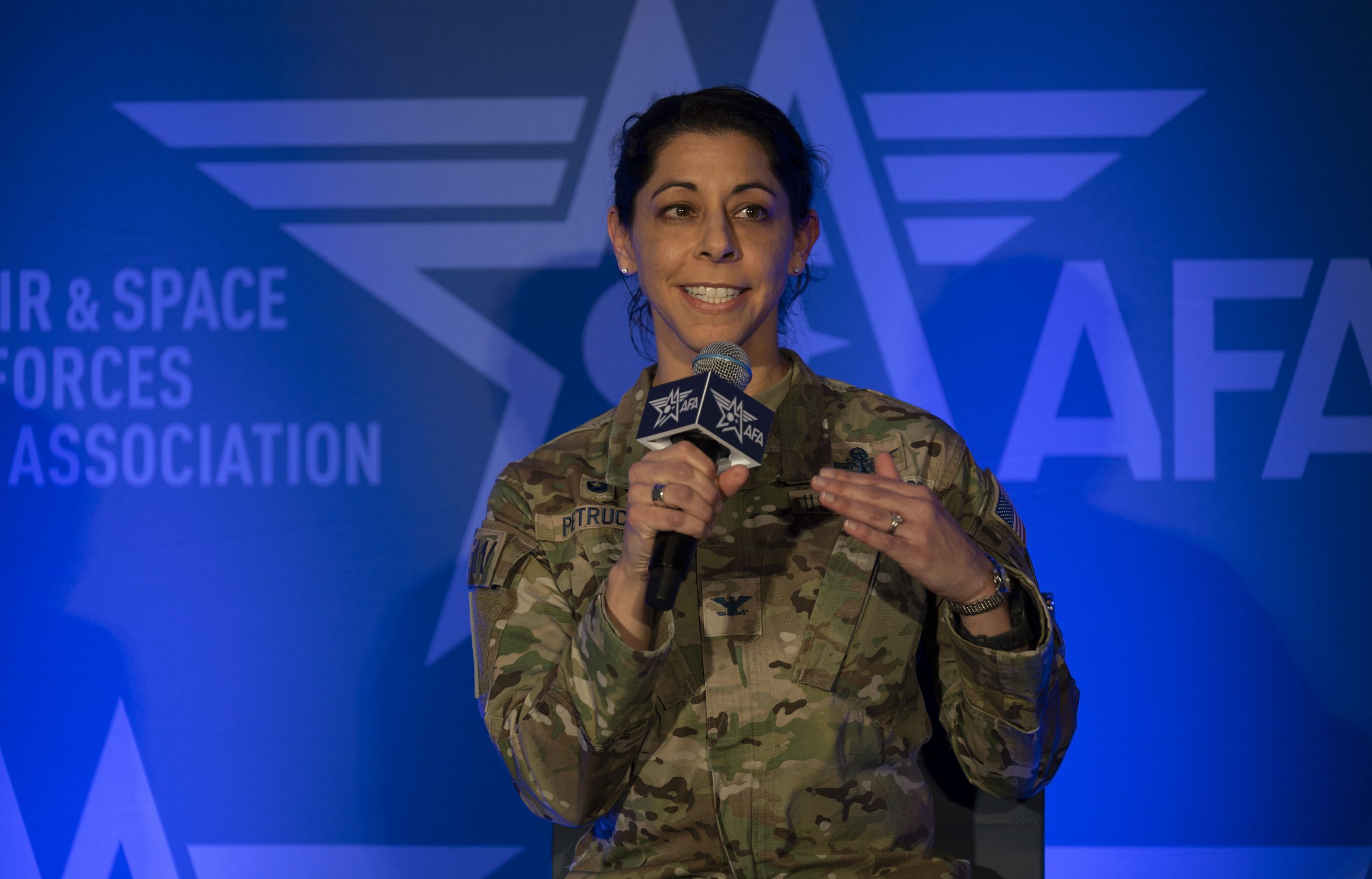AURORA, Colo.—This week’s revelation that the Air Force has designated its first uncrewed fighters set the stage for the makers of the two aircraft to talk about the logistics of deploying them to dispersed locations.
Air Force Chief of Staff Gen. David W. Allvin revealed the alphanumeric designations—General Atomics’ YFQ-42 and Anduril Industries’ YFQ-44—on March 3 at the AFA Warfare Symposium. The two aircraft were the first to receive designations as part of the Air Force’s Collaborative Combat Aircraft program. The Air Force envisions incorporating CCA drones into formations led by manned fighters.
The ability to place CCA drones across scattered locations within range of an enemy provided one of the prevailing cases for their development.
Distributed basing creates “multiple dilemmas for adversaries,” said Maj. Gen. Joseph D. Kunkel, the Air Force’s director of force design, integration, and wargaming. Those adversaries must then “make choices about whether they’re going to target or not—that’s a really big deal for us.”
At the same time, though, “that distributed basing also creates a lot of inefficiencies in how you might sustain something,” Kunkel noted in a discussion with industry representatives March 5.
Both drones are in the prototype phase.
Mike Atwood, vice president of advanced systems for General Atomics Aeronautical Systems, said his company’s design mitigates that issue because it uses components already in MQ-9 Reapers, meaning it will have “a huge infrastructure of parts already deployed around the globe.”
Anduril Industries, meanwhile, decided early on that “everything had to be easily accessible” for maintenance and repairs, said Andrew Van Timmeren, the company’s senior director for autonomous airpower. The company has “virtual models of people reaching into places” to ensure ease of access and “simplicity, low sustainment, [and] low maintenance.”
In addition to simple designs and easily available parts, Kunkel said he has been thinking about “the best way to conduct logistics under attack,“ mostly by “keeping as much of the logistics out of that area where it can be attacked” as possible.
CCAs might themselves provide part of the solution to their own logistics puzzle. Kunkel described how the Air Force sometimes sends MQ-9s when it needs to transport parts between bases, and Atwood said one reason General Atomics included an internal weapons bay in its design was “for carrying not just missiles and kinetics” but also to “hide where you’ve put your most sensitive stuff.”
In keeping with the overall CCA concept, Van Timmeren said CCA munitions should also be “affordable and mass producible. … You don’t need exquisite munitions.”
To prepare the Airmen who will ultimately work on CCAs and possibly their logistics, Kunkel said Air Education and Training Command is “putting a lot of thought into that,” while the Experimental Operations Unit at Creech Air Force Base, Nev., is “putting these capabilities in the hands of warfighters; they’re going to figure that out.”
Kunkel said the uncrewed fighters are “going to change how we achieve air superiority,” characterizing their arrival as “just fantastic.”
